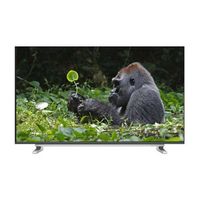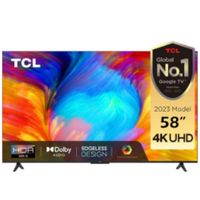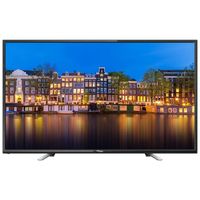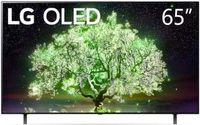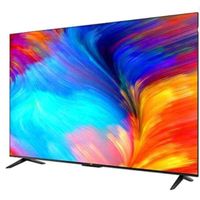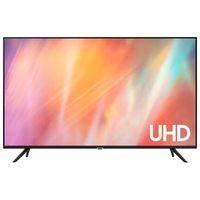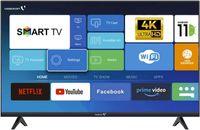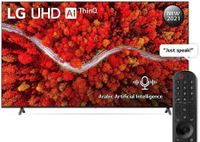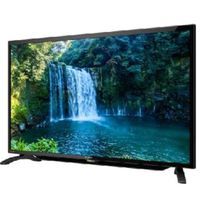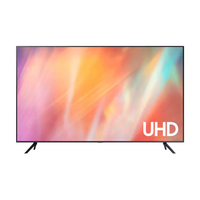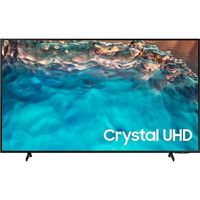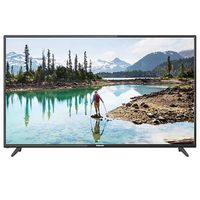Televisions are part and parcel of your interiors. They are synonymous with any environment formal and informal alike. Indeed, your television could be your best friend for the years to come. So, no – it isn’t like buying a toaster oven! You’ll need to put in a lot more effort! After all, before you spend thousands of hours watching it, you’ll want to spend a few choosing it.
You can see televisions in billions of homes around the world today. But, a hundred years ago nobody even knew what a TV was. Only a few thousand owned a television until 1947. Aren’t you curious about how did such a ground-breaking technology turn from a niche invention to a living room necessity? Well, for starters, TVs started appearing in the 1800s. They mechanically scanned the images and then transmitted them onto a screen. Inventors John Logie Baird and American inventor Charles Francis Jenkins created them independently. The types, designs, features and models kept advancing as the years passed by. Today, TVs have changed the way we look at the entire entertainment industry.
Exploring different types of televisions
TVs have moved far beyond merely being a medium to watch your favourite shows. Not only television has re-envisioned your sense of the world, but it remains rock solid even in the age of Facebook, the internet and YouTube. However, buying a television can be a cumbersome task, particularly if you’re quite not sure what you are looking for. That’s because unlike the old TVs the newer ones have a baffling array of acronyms, tech jargon, and formats. Why don’t we first get started with explaining their types and then move ahead with a few tips to get your perfect one?
LCD TVs
The LCDs are typically thin flat-screen TVs. Moreover, you generally see them in laptops, computers and TV screens. The term LCD stands for ‘liquid crystal display”. This display is a unique flat panel that blocks or allows the light to pass through it. Usually, this panel comes with segments. Each of these segments contains liquid crystals. You can change the colour and transparency of these blocks by reducing or increasing the electrical current. These LCD crystals do not produce light of their own. Therefore, an external light source like a fluorescent bulb is needed to create the image. This makes it quite different from its other television counterparts.
The LEDs: the big screen TV
On the contrary to popular belief, LED television is not an entirely new format of TV. Instead, it is an updated version of the previous LCD. Typically, the LEDs use the same technology as the LCDs. But, instead of being illuminated by a fluorescent bulb from behind, these are lit by an array of LEDs. This type of television is smaller in size and is far more efficient. Moreover, this means the design of the televisions like these is narrower. LEDs generally come in two other types. The direct LED – the one that comes with an array of LEDs directly behind the screen. The edge-lit LED – the ones that come with lights set around the television frames.
OLED TV
Of course, this type of television is a massive leap in terms of television screen technology. Unlike its name, OLED is nowhere close to LEDs. OLED, the acronym expands to ‘organic light-emitting diode’. These use materials like carbon created light. This happens when a direct current is applied to the television. Unlike, LCD/LED screens, an OLED doesn’t require a backlight to illuminate the set area. Without this restriction, the OLEDs can be much thinner and crucially flexible. On the whole, the OLEDs creates deeper colours and a more crisp contrast. However, it is costly. Therefore, you can hardly see them as devices with ‘affordable prices’.
Plasma TVs
Plasma television comes with a screen made of 2 sheets of glass and a mixture of gases. These two sheets contain the gasses in between. Typically, the injected gases are sealed in plasma form during the manufacturing process. That’s why we call them ‘Plasma’ TVs. When you charge them with electricity, they react and cause the illumination of the pixels across the screen. Undoubtedly, plasma TV is far more superior to its other counterparts, such as LED/LCD. Especially when compared in terms of screen sizes. These come with larger screens, typically around 40+ inches. For such large screen size televisions, you should go for the plasma option. Many times you’ll also find 80+inches of these screens.
CRT
Do you remember that ‘chunky’ looking TV from your childhood days? Well, those are CRTs – cathode ray tube television. The reason it is so bulky is that it houses the box houses a screen and a projector gun. Typically, an image is created by firing electrons through this gun onto the screen. This excites the particles on the screen. Moreover, they have a fast response time and come with no motion artefacts. Of course, CRTs are much less expensive than others. Also, they operate at any resolution, aspect ratio and geometry. With the advent of televisions with advanced technology, this television has been on the downward curve. They have been on a fall from the early 2000s.



